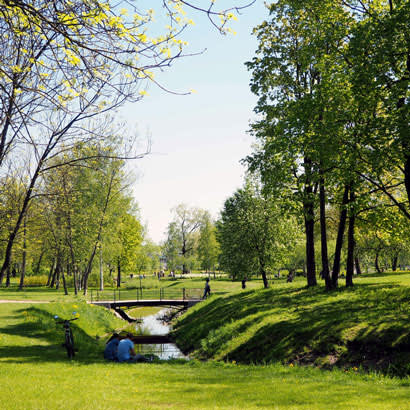
It finally seems to have cooled off here on the East Coast, and while most of us are desperate to have one more day at the pool, others are thankful for the relief from the scorching, record-breaking temperatures. Regardless of where you live, our changing climate affects your mental, social and physical health. Most notably, floods — major or nuisance — and extreme heat impact everything from your ability to safely enjoy the outdoors to your home, belongings and livelihood.
However, imagine that daunting fear coupled with no access to air conditioning, shade or a welcoming place to gather and go for a walk. Imagine telling your kids they can’t go outside to play or walk to their friend’s house because your neighborhood is a sea of asphalt with no trees, so when it’s sunny it feels like it’s 110 degrees and after a storm the sidewalks are underwater. Unfortunately, this is reality to vulnerable populations across the country, including low-income and communities of color, largely due to the environmental, economic and development injustices they live with.
That’s why NRPA is elevating the role that parks play in building climate resilient communities. Parks themselves play a key role in disaster recovery when natural disasters strike, but when they implement green infrastructure they also function as spaces that mitigate the impacts of these disasters. Green infrastructure is the natural and built green spaces that use nature and natural processes to manage a variety of challenges, including water quality, flood risk, and air quality and temperature, which in turn can improve human health. However, individual and community health is impacted by more than just physical and mental health—where you live, work and play are major factors that contribute to your overall health.
Green infrastructure is well known for its contribution to improved environmental quality, but when implemented in parks, projects can also provide social, economic and health benefits to their communities every day. Because of this potential, NRPA recognizes the need for cross-sector solutions to address community health disparities through green infrastructure projects in parks.
Building upon existing green infrastructure resources, NRPA created the Parks and Green Infrastructure for Health initiative to ensure that green infrastructure in parks is a widely supported solution to address climate impacts, improve community health conditions, and create equitable access to quality green spaces and parks. Through this initiative, we are developing policy recommendations and best practices at the federal, state and local levels based on existing policies. The recommendations will emphasize strategies to promote more green infrastructure projects in parks and encourage projects that yield community benefits, consider equitable development and focus on vulnerable communities who benefit the most from improved health conditions.
To equip park and recreation professionals with the knowledge and tools to advocate and foster cross-sector collaboration for these projects, NRPA is identifying the audiences and respective messaging needed to advance green infrastructure in parks. These communications will address the need to garner support from top level officials who are responsible for funding appropriations to park agencies. These resources will be available in summer of 2020, but check back here and on our website to follow our progress and learn about key findings.
Let’s make it a priority that everyone has access to a great park with the built and natural green spaces that protect us from the negative impacts of climate change.
Jenny Cox is NRPA's Conservation Program Manager.
This blog is also available here, as part of the Every Body Walk! Collaborative "Turn Your Community Green" month.

